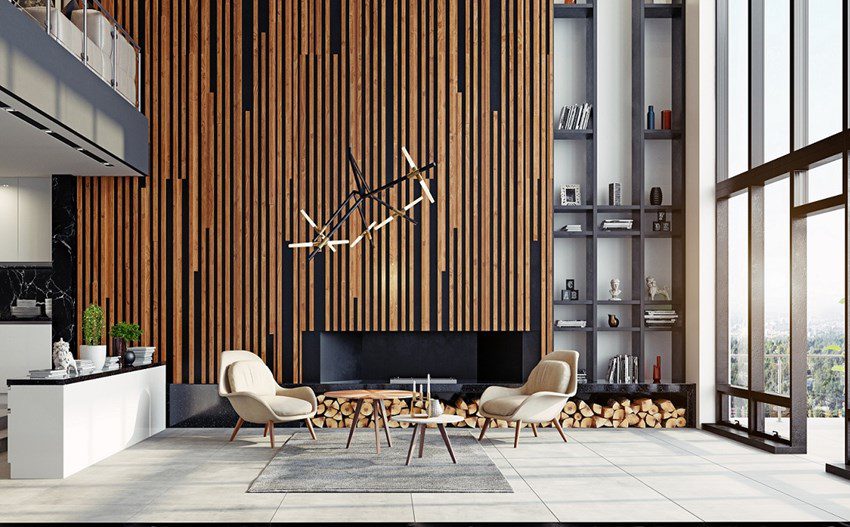In today’s fast-paced world, people spend a significant portion of their time indoors. Whether at home, work, or leisure spaces, the quality of the indoor environment profoundly impacts our well-being. Achieving a good indoor climate involves various factors that contribute to comfort, health, and productivity.
From maintaining optimal temperature and humidity levels to ensuring adequate air quality and lighting, numerous elements coalesce to define what constitutes a favourable indoor environment.
The Basics: Temperature and Humidity
One of the fundamental aspects of a good indoor climate is maintaining an appropriate temperature and humidity level. The comfort zone for most individuals typically falls between 68 and 76 degrees Fahrenheit (20-24 degrees Celsius). However, preferences may vary based on personal comfort levels and external weather conditions. An adjustable and programmable thermostat plays a pivotal role in regulating indoor temperatures, ensuring a comfortable ambiance year-round.
Moreover, humidity levels significantly impact indoor comfort. Humidity that is too low can lead to dryness and discomfort, causing skin irritation and respiratory issues. Conversely, high humidity fosters an environment conducive to mould growth and can exacerbate allergies. An optimal indoor humidity range of 30-50% is generally recommended for comfort and health.
Air Quality: Ventilation and Filtration
Proper ventilation is vital for maintaining good indoor air quality. Adequate air exchange through ventilation systems ensures the removal of pollutants, odours, and excess moisture while introducing fresh outdoor air. Well-designed ventilation systems not only regulate temperature but also enhance indoor air quality, minimizing the concentration of airborne contaminants. Heat recovery systems are gaining popularity in bathroom renovations due to their ability to improve air quality and energy efficiency. These systems offer a balanced approach to ventilation by simultaneously expelling stale indoor air while bringing in fresh outdoor air.
Moreover, air filtration systems play a crucial role in trapping particles and allergens, ensuring cleaner air circulation within indoor spaces. High-efficiency particulate air (HEPA) filters effectively capture tiny particles, including dust, pollen, and pet dander, contributing to a healthier indoor environment.
Lighting and Acoustics
Lighting plays a pivotal role in creating a pleasant indoor atmosphere. Natural light has numerous benefits, including boosting mood, enhancing productivity, and regulating the body’s circadian rhythm. Maximizing natural light by incorporating larger windows or utilizing light-coloured interiors can significantly improve the ambiance.
Additionally, artificial lighting should be carefully chosen to complement natural light and fulfil specific needs within a space. Efficient lighting design not only ensures proper illumination but also minimizes glare and shadows, contributing to a comfortable indoor climate.
Acoustics also play a crucial yet often overlooked role. Excessive noise levels can lead to stress and decreased concentration. Implementing sound-absorbing materials or strategic layouts that minimize noise transmission can significantly enhance the comfort and usability of indoor spaces.
Sustainable Practices for a Healthy Environment
In recent years, the focus on sustainability has extended to indoor spaces. Green building practices and eco-friendly materials contribute to a healthier indoor environment. Using low VOC (volatile organic compound) paints and materials reduces harmful emissions, improving air quality and ensuring a healthier atmosphere for occupants.
Furthermore, incorporating energy-efficient systems and appliances not only reduces environmental impact but also positively impacts indoor comfort. Proper insulation, energy-efficient windows, and smart home technologies contribute to maintaining a stable indoor climate while minimizing energy consumption.
Psychological and Physiological Impact
The importance of a good indoor climate extends beyond physical comfort; it profoundly affects mental and emotional well-being. A well-designed, comfortable indoor environment can promote relaxation, creativity, and overall happiness. Conversely, poor indoor conditions may lead to stress, discomfort, and health issues, affecting both productivity and quality of life.
Studies have shown that individuals perform better in environments that support their physical and emotional needs. Factors such as indoor air quality, lighting, temperature, and acoustics significantly influence concentration, mood, and cognitive function.
Conclusion
In conclusion, a good indoor climate encompasses various factors that collectively contribute to comfort, health, and well-being. Maintaining optimal temperature and humidity levels, ensuring good air quality through proper ventilation and filtration, optimizing lighting and acoustics, and integrating sustainable practices are crucial elements in creating a conducive indoor environment.
Recognizing the significance of a good indoor climate goes beyond mere comfort; it impacts our productivity, health, and overall quality of life. Embracing practices that prioritize the creation of healthy indoor spaces is essential in fostering environments where individuals can thrive and lead fulfilling lives.



